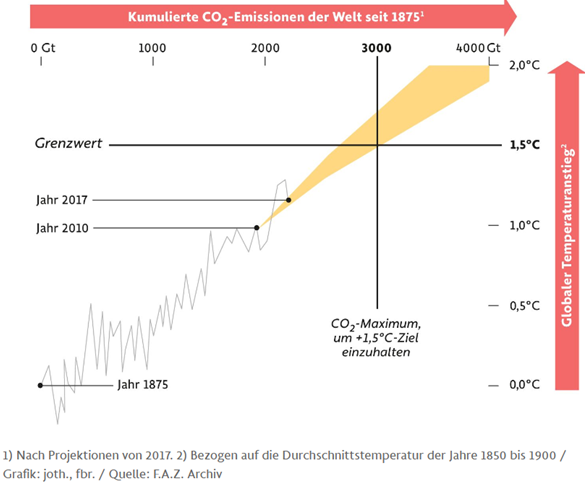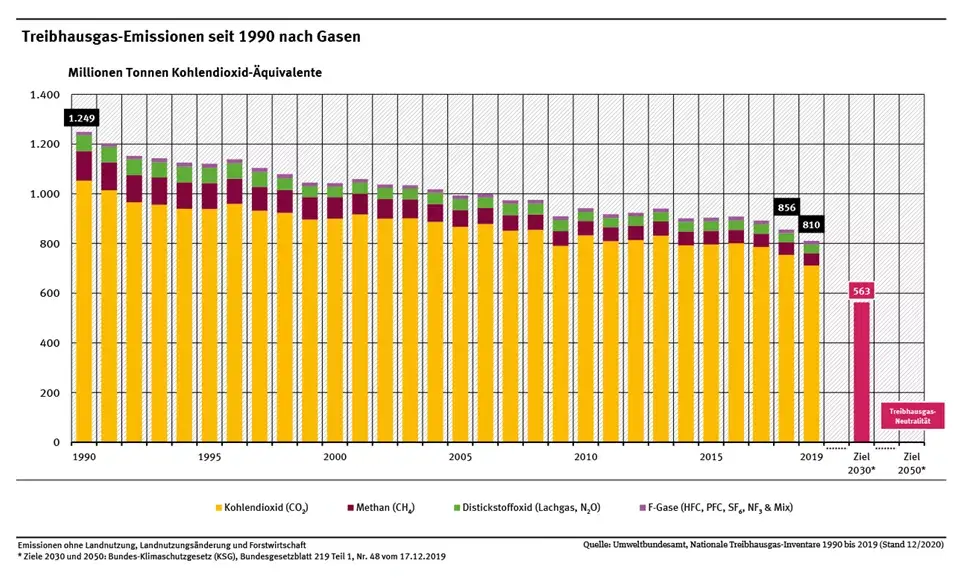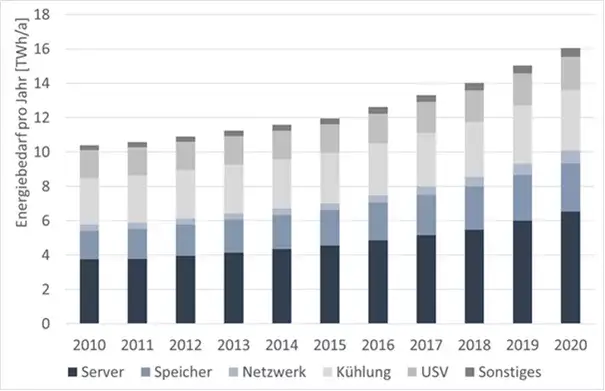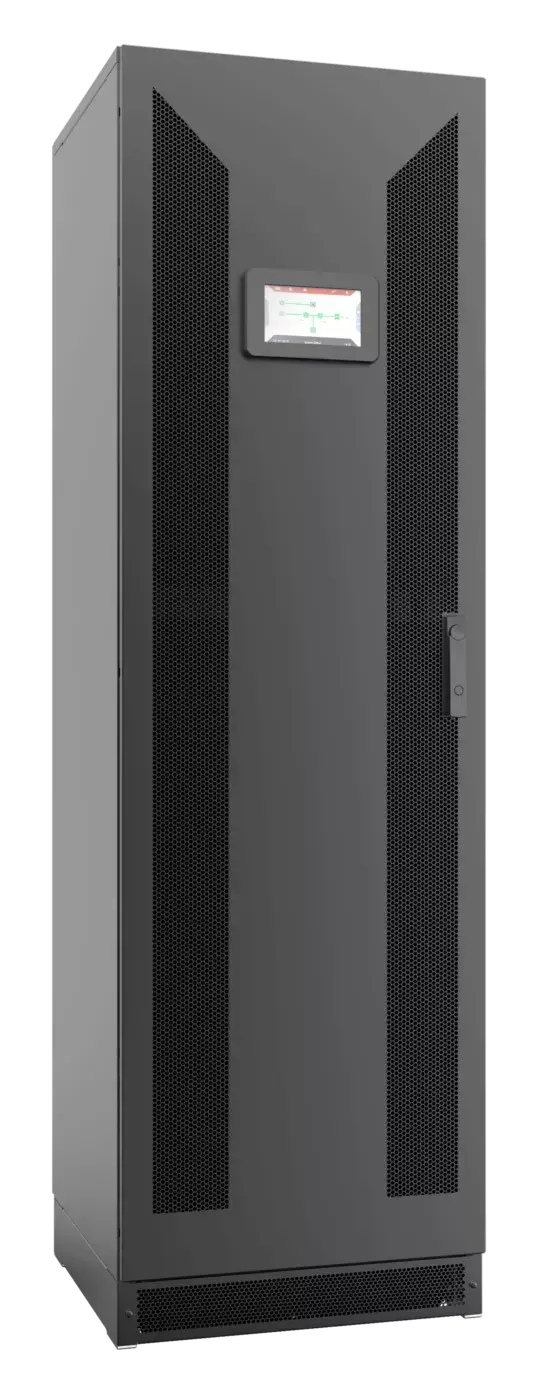What is a carbon footprint and why do we need change?

In order to achieve the climate targets set out in the Paris Agreement, it is not only politicians who are called upon to act, but also industry as a major producer of greenhouse gases. A popular method of demonstrating the emissions generated by a company is the carbon footprint. But in this WÖHRLE MARKET INSIGHTS you can find out to what extent a carbon footprint is suitable for this purpose and what such a footprint reveals.
Progressive climate change and rising temperatures
Climate change has been progressing steadily for years. Since the beginning of industrialization, more than 2000 gigatonnes - i.e. 2,000 billion tonnes - of carbon dioxide (CO₂) have been released. As a result, the average global temperature has risen by around one degree Celsius.

This increase within a short period of time is considerable. According to the Paris Agreement to combat climate change, global warming should be kept well below 2 degrees. If possible, the aim is to limit it to 1.5 degrees. To achieve this, only a few hundred gigatons of CO₂ should actually be released. In view of the progress to date, it is considered unlikely that this will be achieved. In recent years, CO₂ emissions have rushed from one record to the next, driven by the growing world population and the expanding global economy. If we also consider other greenhouse gases such as methane and nitrous oxide, the emissions are far higher - which means we are more likely to see temperatures rise to 3 degrees or more.
Definition of carbon footprint
"Climate balances indicate which emissions of carbon dioxide or other greenhouse gases can be attributed to certain activities. This can be done for countries, for example: such country balances then record emissions on the respective territory from power plants, road traffic, deforestation, etc."
Source: www.co2online.de
Climate targets of the EU Commission
The EU Commission's climate plan includes the goal of reducing CO₂ emissions by 55% by 2030 compared to 1990. Experts are expressing concerns about this: "An EU target of 55 percent for 2030 would mean that emissions would have to be reduced by around twice as much as what was achieved between 2005 and 2018"Marc Oliver Bettzüge, Director of the Institute of Energy Economics at the University of Cologne (EWI), told Handelsblatt.
To assess how realistic this 55% target is, it is also helpful to take a look at developments in recent years: over the past 12 years, considerable investment has been made in the expansion of wind and solar power plants - what has been achieved in terms of climate protection in Germany? The result is sobering. Although more than 40 % of electricity came from renewable sources in 2019, emissions of climate-damaging gases have remained almost unchanged for 12 years, apart from minor fluctuations due to weather and economic conditions.

Transparency enshrined in the Paris Agreement
In order to create transparency, the signatory states to the Paris Agreement committed to regulations on the procedure for reporting greenhouse gas emissions, climate protection measures and support services. The aims of the transparency framework are to provide a clear understanding of the measures taken to tackle climate change and to be able to review the targets set. There are significant consequences for reporting in Germany and the EU with regard to the use of global warming potentials of greenhouse gases other than carbon dioxide.
Consequences for climate reporting in Germany:
Corporations can feign CO₂ neutrality - Climate neutral my ass!
The transparency framework thus promotes and regulates reporting. On the other hand, many companies want to work and produce more ecologically. This increases the risk of greenwashing - because many of them are making their carbon footprint look good. The "carbon footprint" tool is intended to make it clear to customers, investors and the public what progress a company has made in avoiding greenhouse gas emissions. The result of the carbon footprint depends above all on the actual energy consumption and the emission factors to be applied for the individual energy sources.5 Foreign certificates of origin for "green electricity" make the carbon footprint look good. However, this does not solve the climate problems, as the following list shows:
- In 2019, more than 100 billion kilowatt hours (TWh) of "green electricity" were traded in Germany.
- According to the Association of Issuing Bodies (AIB), more than 96 billion of the 100 billion kilowatt hours of guarantees of origin (GOs) were imported from abroad in 2019. These guarantees of origin are usually traded separately from the actual supply of electricity.
- The green electricity actually generated - in this case the 96 billion kilowatt hours - is sold in the respective home country. These are mainly existing power plants and, above all, hydropower - plants that are often decades old.
Against this background, the question arises as to what extent carbon footprints are a suitable incentive for companies to make ecologically sensible decisions regarding their electricity consumption and to contribute to a lasting reduction in emissions.
Really reducing CO₂ emissions
One contribution to a permanent reduction in emissions is the use of efficient, energy-saving technologies. The electricity consumption of digital infrastructures, for example, has increased rapidly in recent years. The Borderstep Institute in Berlin regularly publishes statistics on the electricity consumption of digital infrastructures:

This shows that although the UPS sector in data centers has become more efficient, the power losses are still considerable. With a UPS consumption of 2 TWh per year, there is still a need for action. By using modern, modular UPS systems, we can take a step towards reducing CO₂ emissions. Energy-efficient UPS systems such as those from Huawei help to reduce the energy requirements of digital infrastructures and can replace older systems with high power consumption. With high efficiencies of up to 97 %, low energy consumption and maximum performance at low operating costs, they make an important contribution to really improving the carbon footprint.
Sources:
https://www.faz.net/aktuell/wirtschaft/klima-energie-und-umwelt/kohle-oel-und-gas-das-sind-die-treiber-des-klimawandels-17066648.html
https://www.handelsblatt.com/politik/deutschland/green-deal-erhoehung-der-eu-klimaziele-bundestagsfraktion-stellt-sich-gegen-merkel/25813342.html?ticket=ST-14778533-mgebeLSrwNVP3tLYeDcy-ap1
https://www.physi.uni-heidelberg.de/~dubbers/energiewende/text.pdf
https://www.umweltbundesamt.de/sites/default/files/medien/479/publikationen/texte_77-2020_transparenzsystem_endbericht_final_clean_20191120.pdf
https://www.faz.net/aktuell/wirtschaft/co2-kompensation-warnung-vor-einem-markt-fuer-greenwashing-17194792.html#:~:text=Alle%20Unternehmen%20wollen%20gr%C3%BCner%20werden,einem%20gigantischen%20Markt%20f%C3%BCr%20Greenwashing.&text=Um%20mehr%20als%20ein%20Drittel,nach%20oben%20geschnellt%2C%20sagt%20Lehmkuhl.
https://www.bundesnetzagentur.de/SharedDocs/Mediathek/Berichte/2019/Monitoringbericht_Energie2019.pdf?__blob=publicationFile&v=6
https://www.klimareporter.de/strom/fuer-einen-fairen-oekostrom-markt-ausserhalb-des-eeg
https://docplayer.org/53476285-Herausforderungen-bei-der-anrechnung-von-erneuerbarem-strombezug-in-klimabilanzen.html
Energiewirtschaftliche Tagesfragen 66. Jg (2016) Heft 6 Challenges in the billing of renewable electricity procurement in climate balances

